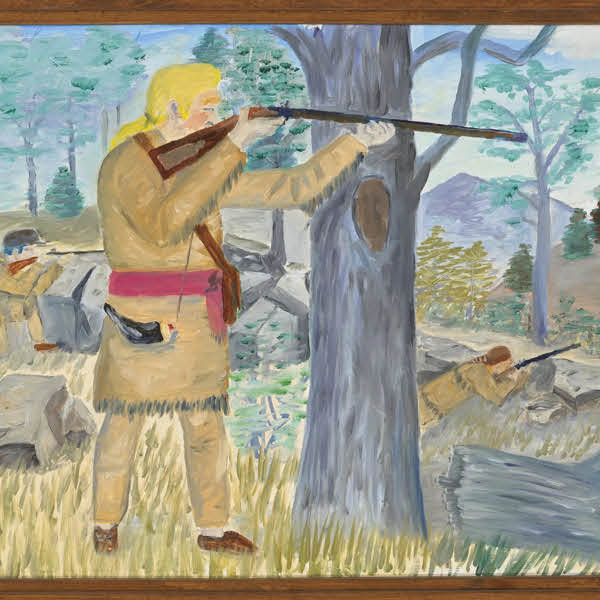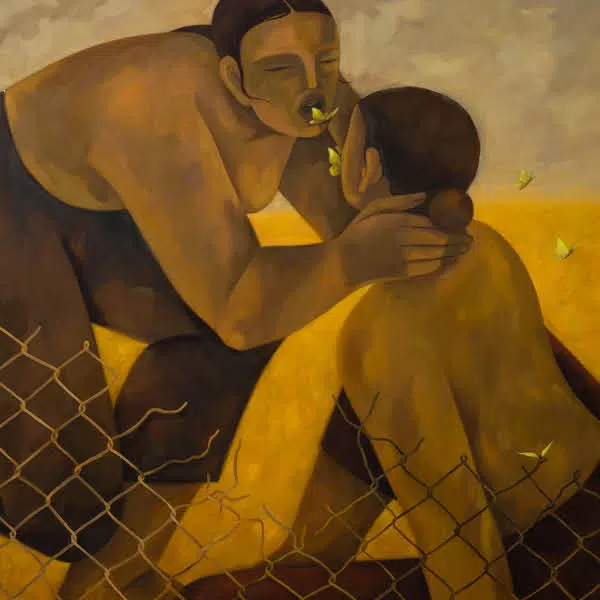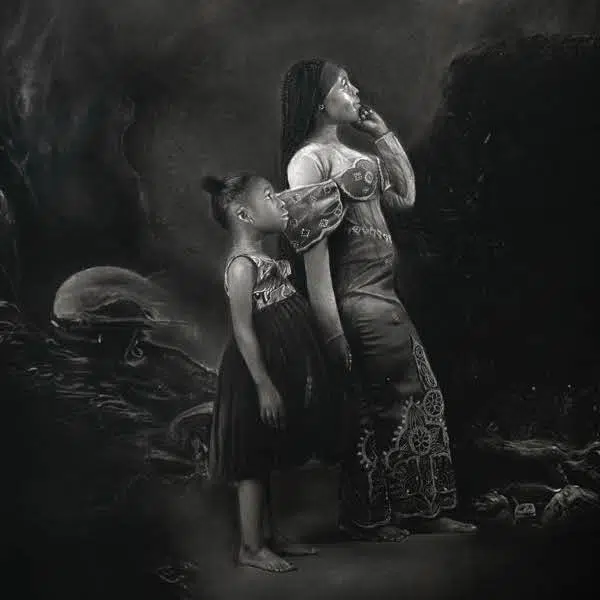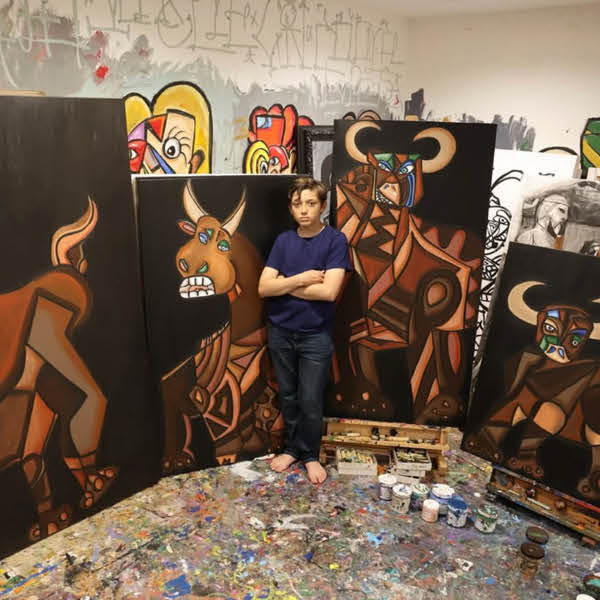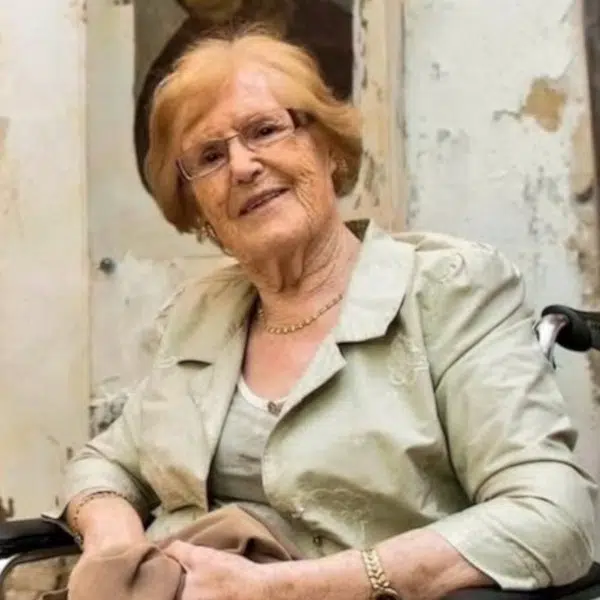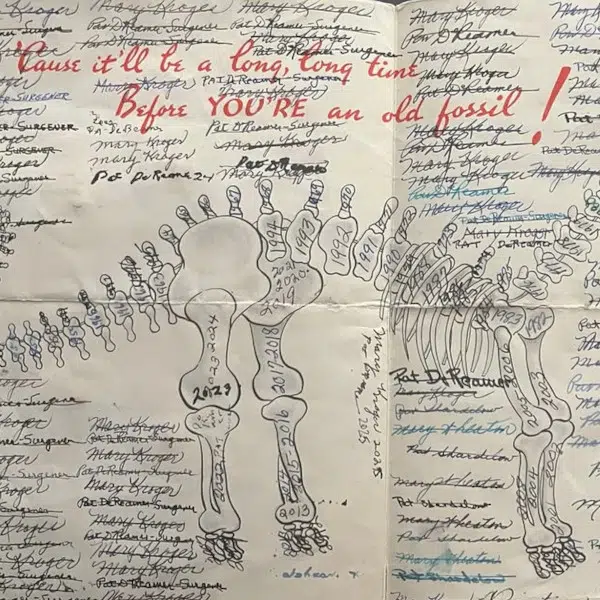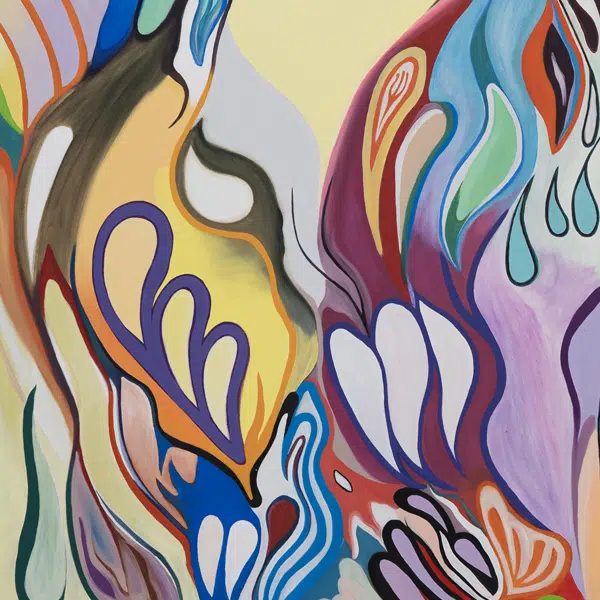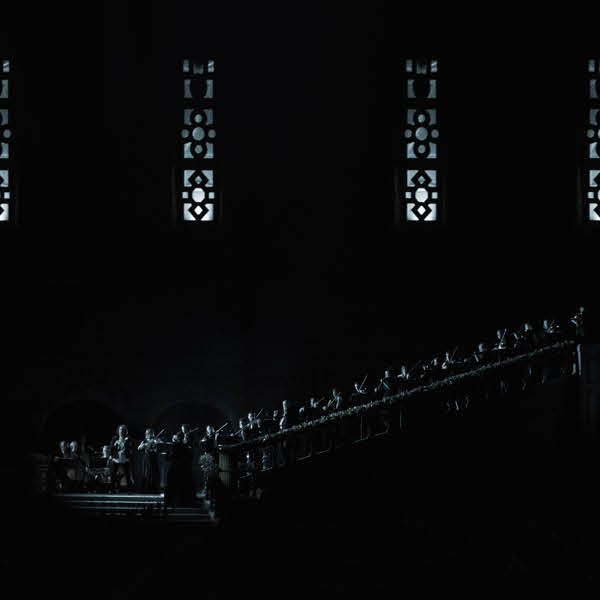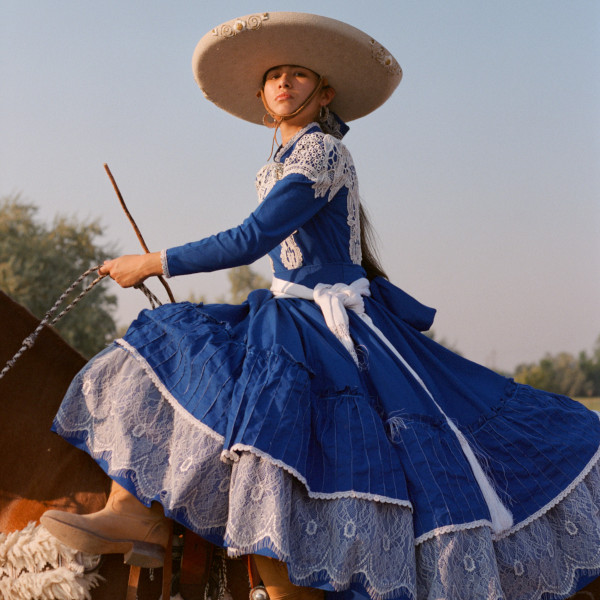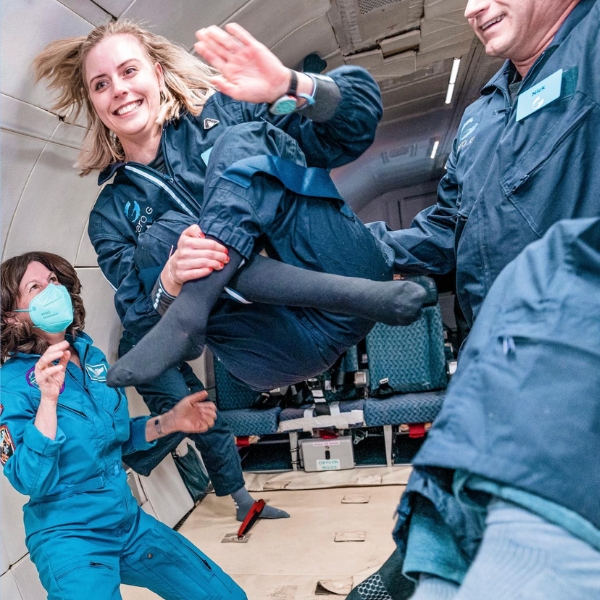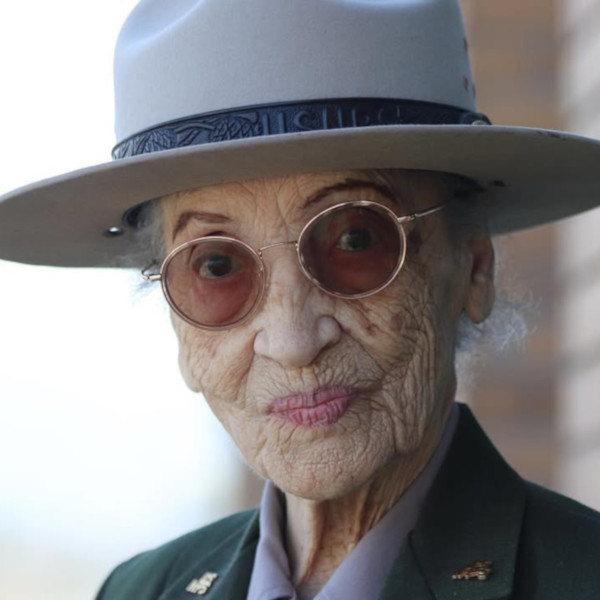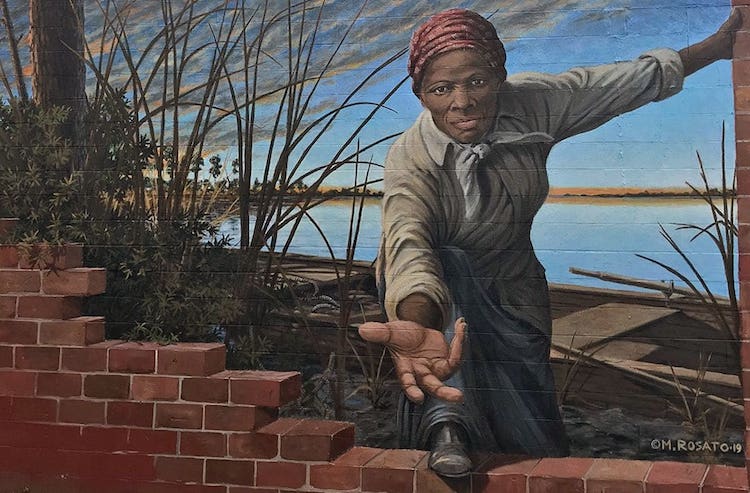
Specializing in large-scale murals, Maryland-based artist Michael Rosato has crafted countless powerful works of public art. Over the last 25 years, Rosato has developed a signature style of painting, characterized by monumental compositions, site-specific subject matter, and, most distinctively, an expert use of the trompe-l’oeil technique.
All of these characteristics can be found in his latest project: Take My Hand, a colossal mural of Harriet Tubman. Adorning an exterior wall of a museum dedicated to Tubman—an African American abolitionist who escaped slavery and, in turn, helped others flee through the Underground Railroad—the mural pays homage to the courage and compassion lauded historical figure. Through the use of illusion, Rosato brings Tubman to life, inviting viewers to look up, reach out, and “take her hand.”
Since the piece was completed earlier the year, it has received ample attention. In order to understand what went into this celebrated piece, we spoke to Rosato. In My Modern Met’s exclusive interview below, we learn about how his artistic background, experience in museums, and even geographic location helped shape his design for Take My Hand.
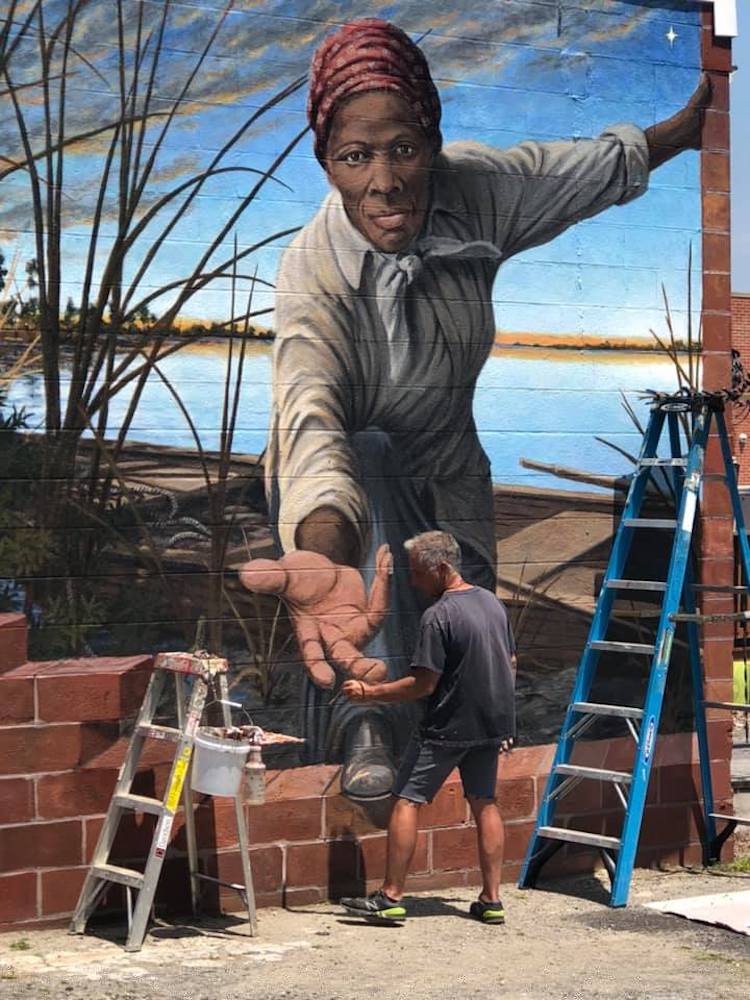
Photo: Honey Bee Trading
Please tell us a bit about your artistic background. Have you always specialized in mural painting, or has your practice evolved over time?
I got a degree in Interior Design from Florida State University and worked in the design field for about seven years but knew it wasn't what I ultimately wanted to do. I was interested in the creative process and wanted to get into fine art, exploring sculpture as well as drawing. Living in Washington, DC and New York City, I spent a lot of time in museums studying the works of artists. I taught myself how to draw by copying Michaelangelo sketches on the walls of my apartment in NY. I already knew perspective from my design days.
My first break came when an acquaintance needed help painting a mural in DC. He asked if I knew how to paint and I . . . lied. I said, “yes.” When I arrived on site he handed me a paintbrush and told me to do the underpainting. (I didn't know what that was.) I confessed that I had never painted but he was needing help so badly that he showed me how to do the underpainting and I quickly realized I could handle it. I worked with him for about a year then went out on my own. The rest is history.
Over the next several years, I spent thousands of hours learning the technical aspects of painting and how to mix and manipulate color simply by painting. I made frequent trips to museums whenever I couldn't figure something out. It has been a great journey to develop my skills and understanding of how to tell stories through mural painting.
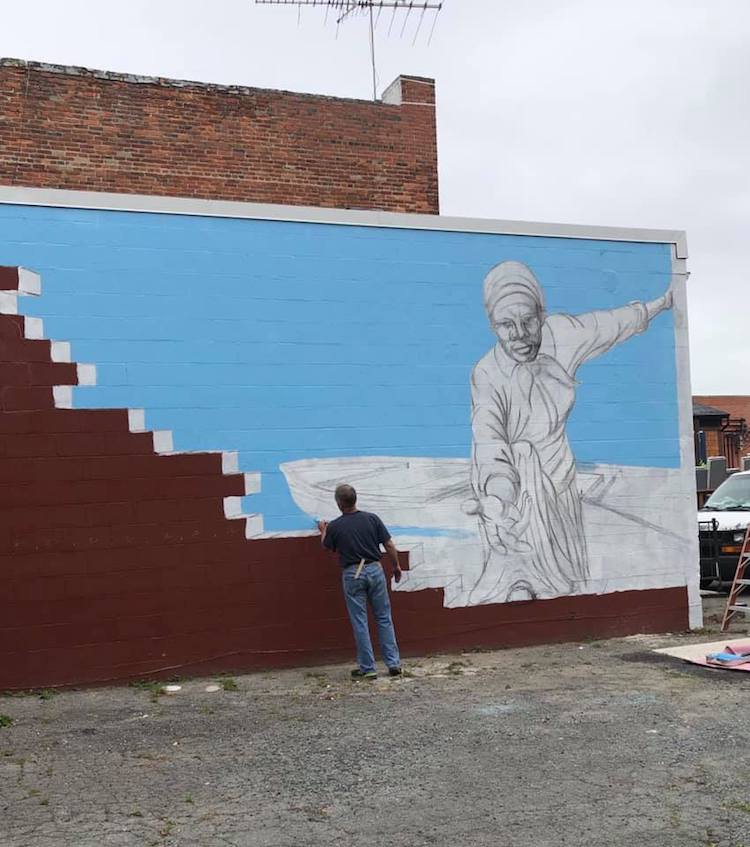
Photo: Honey Bee Trading
You were commissioned to produce a work of public art by the Dorchester Center for the Arts. Was Harriet Tubman always intended as the subject of this “gift to the people of Cambridge?”
Yes. The location of the mural was always intended to be the side of the Harriet Tubman Museum and Educational Center in Cambridge, therefore having Harriet be the subject, or at least part of the mural, made natural sense.
Prior to painting the work, you heard from the people of Cambridge, who voiced “their hopes for her portrayal.” How did the community’s ideas shape the mural’s design?
The design process started with a meeting to gather input from the community about what they hoped the mural would portray. We discussed Harriet's legacy and meaning and each person shared one word about what she symbolized to them. Words like “Faith,” “Family,” “Courage,” “Landscape,” and many others were shared. I used these words as the foundation for my design process.
I knew the mural had to communicate the essence of what Harriet means to people, who she was, and what she stood for. I also wanted to create an engaging image that people would want to interact with. Through my experience with trompe-l'oeil on other projects, I knew using that technique somehow would bring Harriet and her story to life in a way that would invite people in and make them part of the story too.
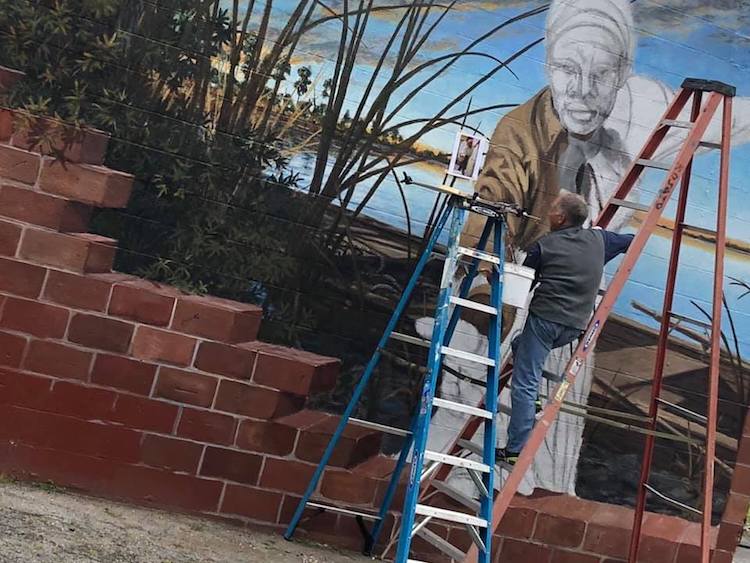
Photo: Honey Bee Trading
How did your own ideas about Harriet Tubman influence your work?
I knew a fair amount about Harriet from living near her birthplace in Dorchester County, MD and from research I've done for other projects. Harriet loved the landscape of this area, which is beautiful with water and marshes and fields. So I wanted that to be part of the mural.
I also was aware of her courage and strength as a person and her willingness to put her life on the line to help others achieve freedom. Her story and example are so powerful and relevant, not only here in Maryland, but the world over. I knew I had to capture this power and create a moment for people of all ages and backgrounds that would be inspiring and reflective.
How long did it take to complete the mural?
The entire process from design to completion took about five weeks. Once I had the design set, the painting process went quickly. Some paintings will fight you, but this one seemed to flow off the brush.
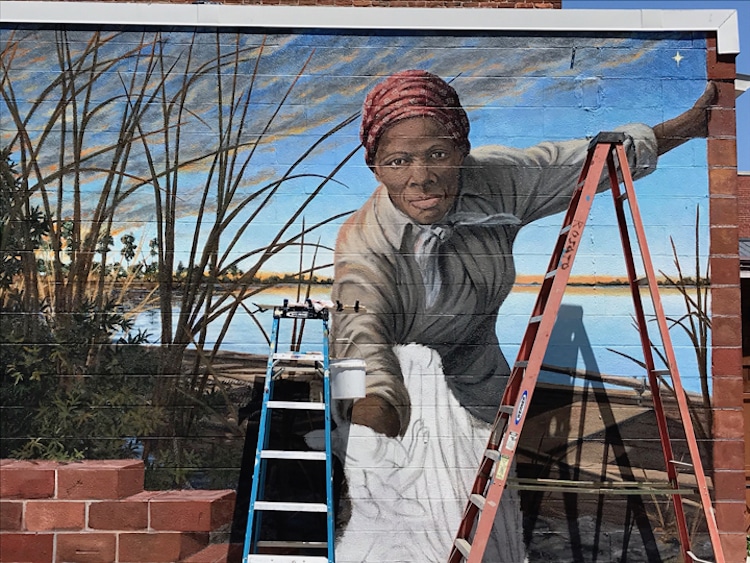
Photo: Honey Bee Trading
What was it like to finally step back and see the completed painting?
It was an amazing feeling to step back and realize I had created the image I had hoped to achieve. I felt a huge amount of responsibility to the African American community to portray this heroic woman with honesty and integrity. People started reacting to the mural even before it was completed. So, I have to admit, I felt relief when I saw people's emotional responses. And, of course, to see people touch Harriet's hand—which was part of the design of the mural—is incredibly gratifying.
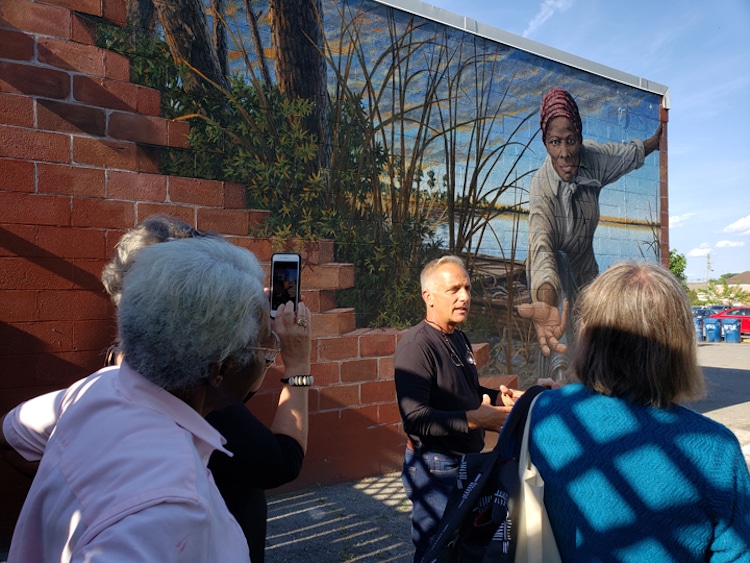
Photo: Honey Bee Trading
You’ve mastered the trompe-l’oeil technique. Any tips for other artists interested in trying their hand at this age-old method?
Trompe-l'oeil requires an understanding of perspective. Once you've mastered the use of perspective, you can manipulate the visual plane in ways that are very impactful. I learned by doing and looking at the work of others who had mastered the technique. I've been painting for over 25 years and continually learn and hone my skills. They say it takes ten thousand hours to master a skill, and I probably have at least that number on the canvas. So, my tip for any artist is: don't be afraid to try, and make mistakes, and keep trying. It's only paint.
Michael Rosato: Website
My Modern Met granted permission to feature photos by Michael Rosato.
Related Articles:
New York Subway Murals Celebrate Influential Icons from Bronx History
5-Year-Old Girl Recreates Photos of Inspiring Women Every Day of Black History Month
People Turn “Nevertheless, She Persisted” into Mantra for Celebrating Strong Women












































































